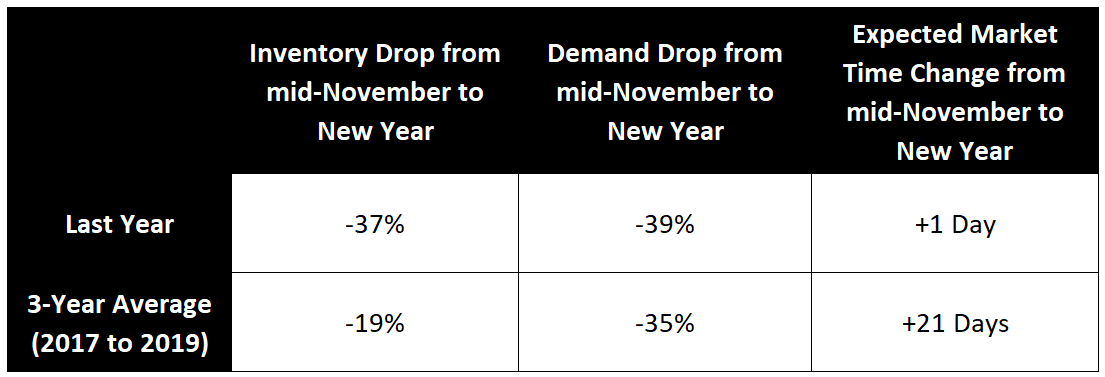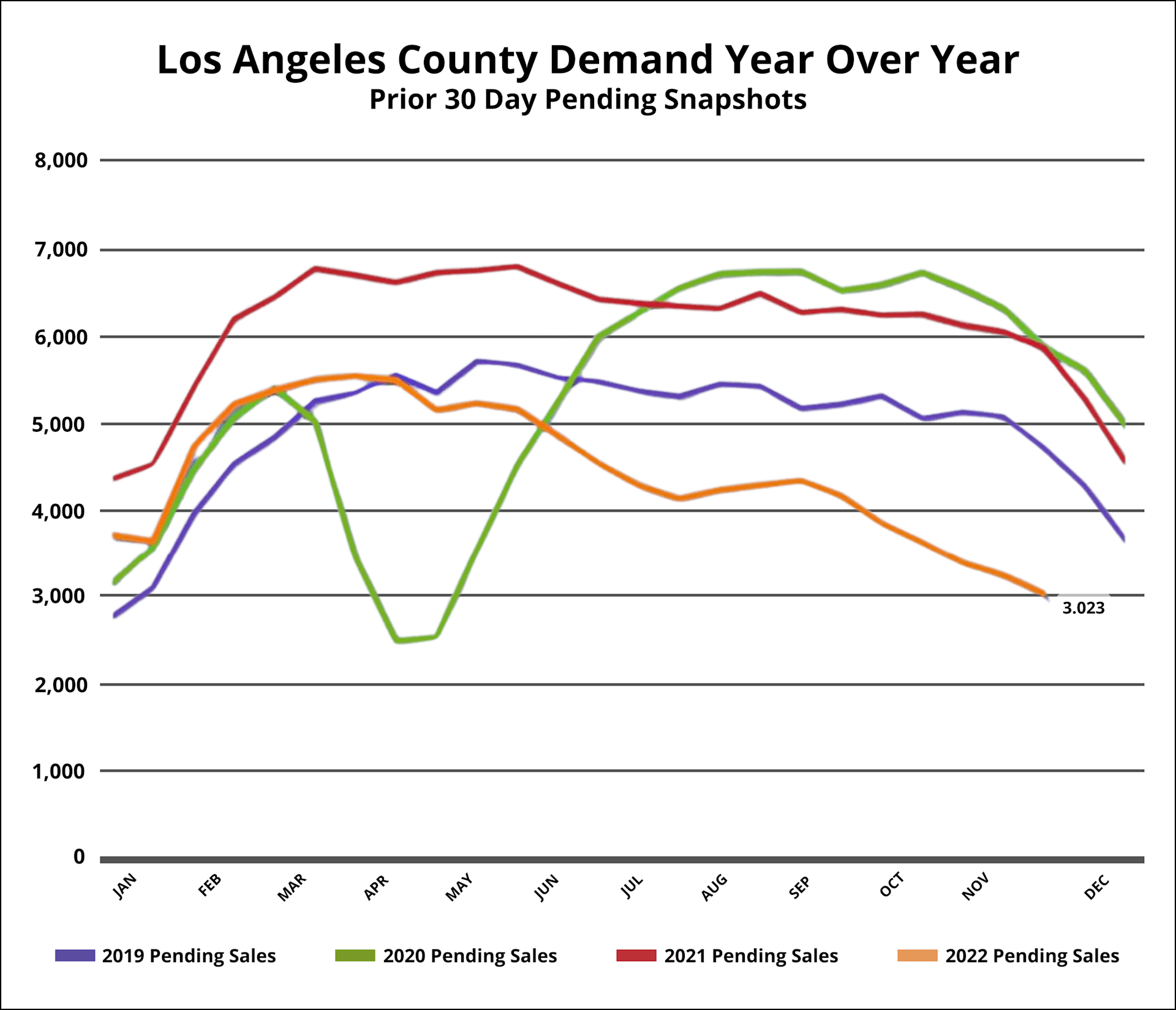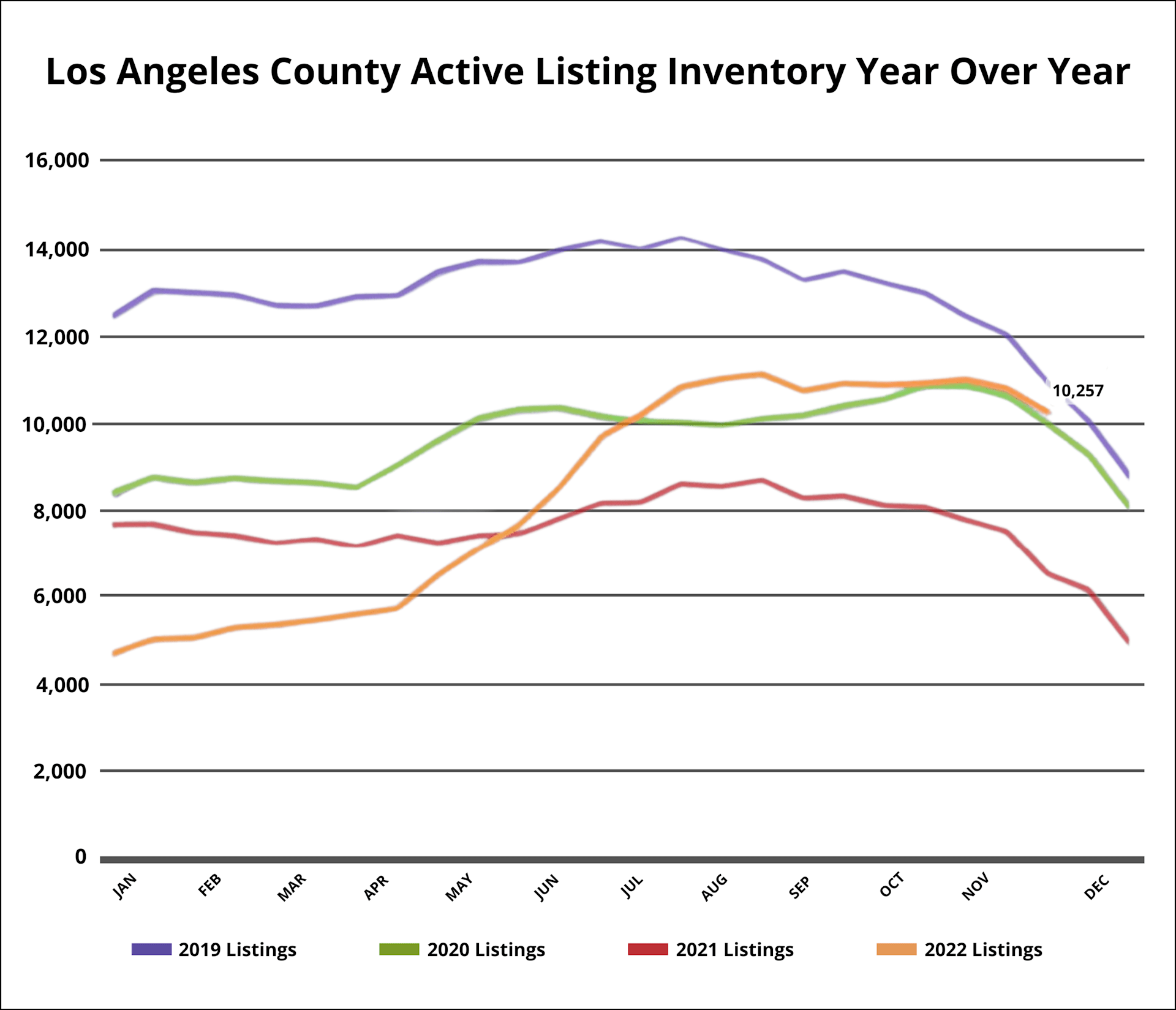A Holiday Pause
The Holiday Market is when the inventory drops, demand dives, and the Expected Market Time rises slightly. Irrespective of the economic situation, without fail, the cyclical slowdown succeeds. Last year the number of available houses was already at historically low levels all year. After hitting the lowest point in the record, in July, it was hard to envision the inventory could fall at the end of the year.
Holiday Market
The number of inventory seasonally drops because not a lot of owners come on the market at the end of the year. The fewest number of sellers enter the fray in December, 58% less than in May, the peak month with the greatest number of new sellers. The second fewest come on in November, 36% less than May's peak. Moreover, a lot of sellers who have not found success, primarily due to price, opt to throw in the towel and remove their homes off the market. The combination of those two forces, fewer new FOR-SALE signs and unsuccessful sellers, caused the inventory to plummet until the start of the New Year.
Demand and Supply
Demand, the number of pending sales over the prior month, decreased by 213 pending sales in the past two weeks, down 7%, and now totals 3,023, its lowest reading since April 2020, the initial lockdown of the pandemic. It is the lowest level for November since tracking began in 2012. Last year, there were 5,841 pending sales, 93% more than today. The active listing inventory in the past couple of weeks plunged by 533 homes, down 5%, and now sits at 10,257 homes, its largest drop of the year and its lowest level since July. In October, there were 25% fewer homes that came on the market compared to the 3-year average prior to COVID (2017 to 2019), 1,901 less. Last year, there were 6,556 homes on the market, 3,701 fewer homes, or 36% less.







